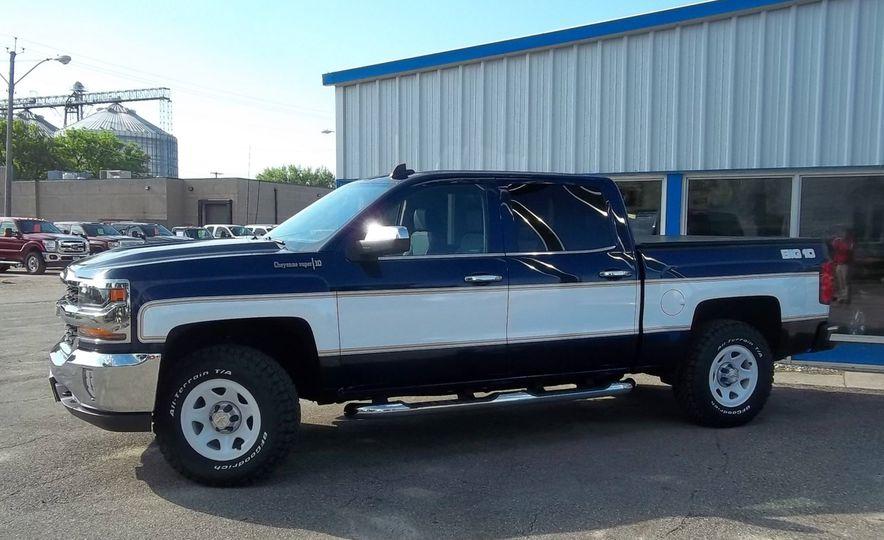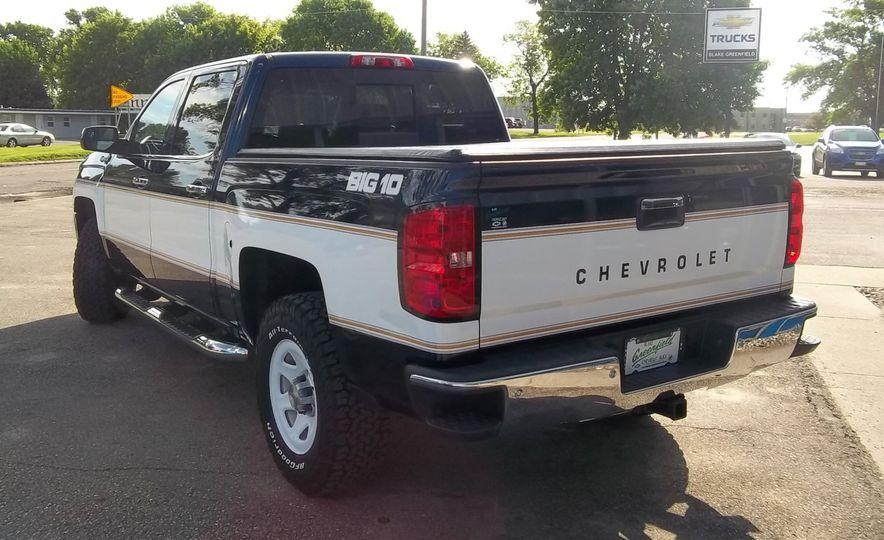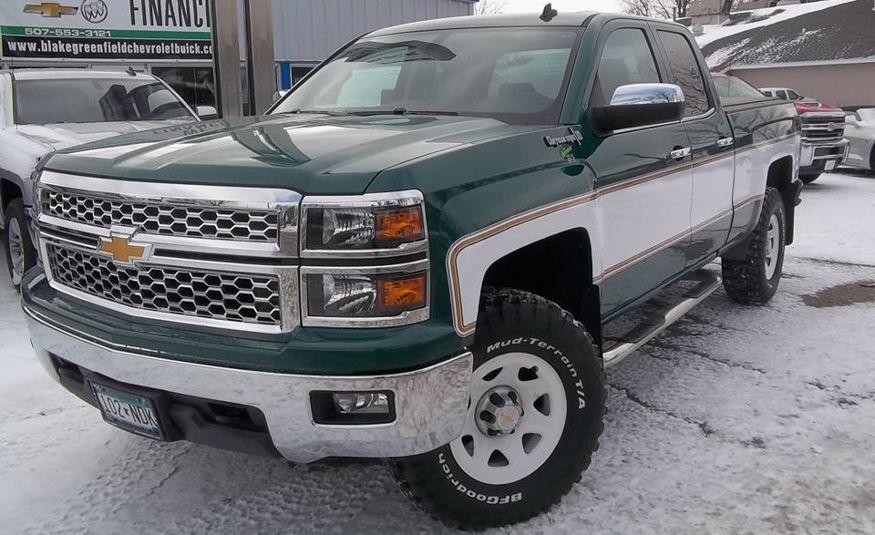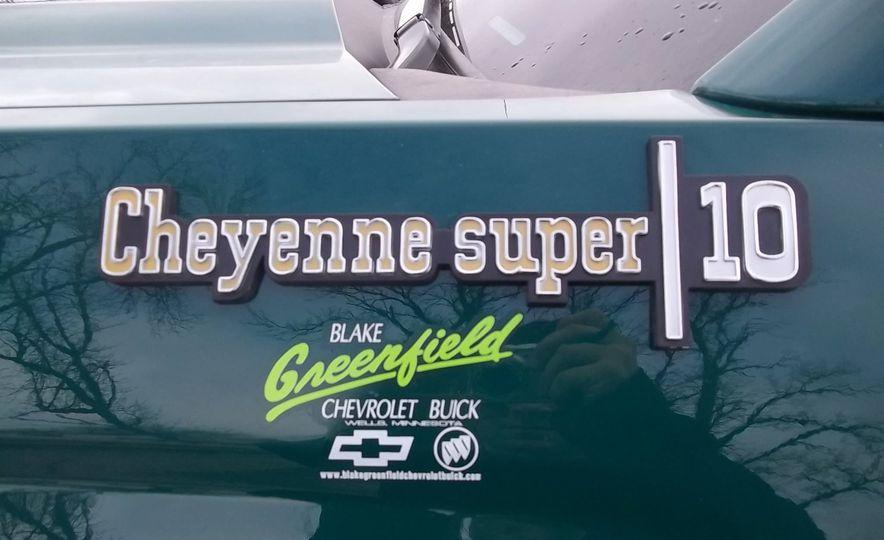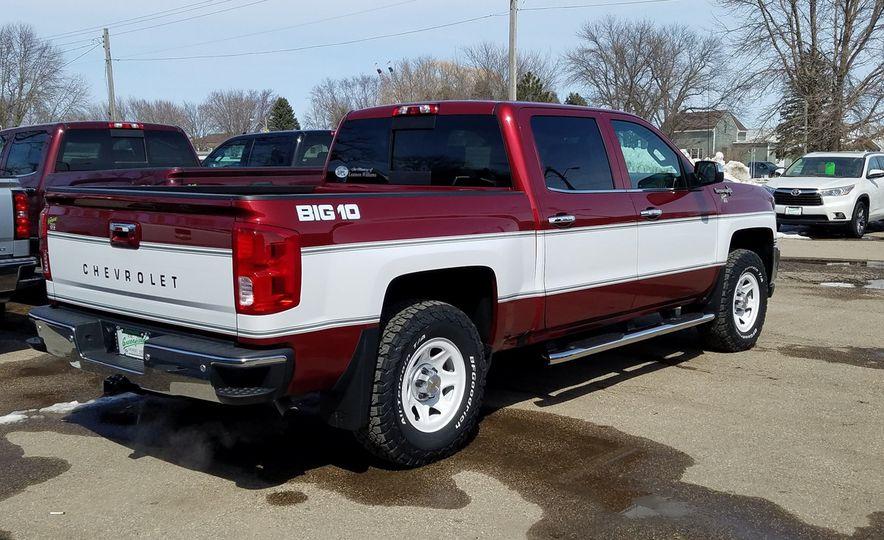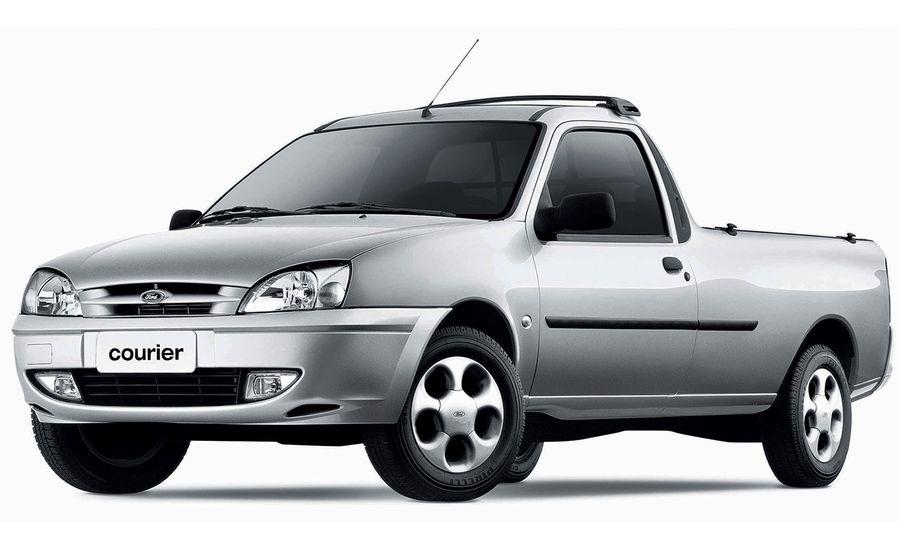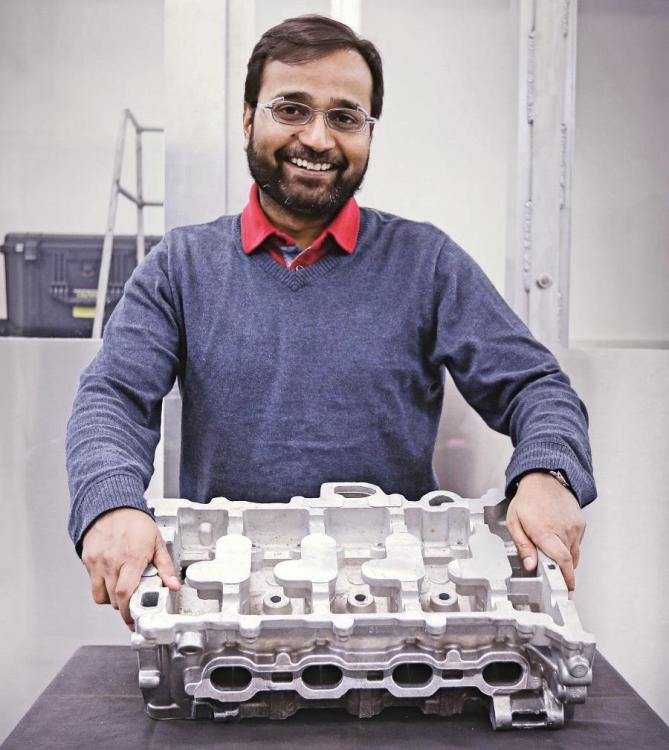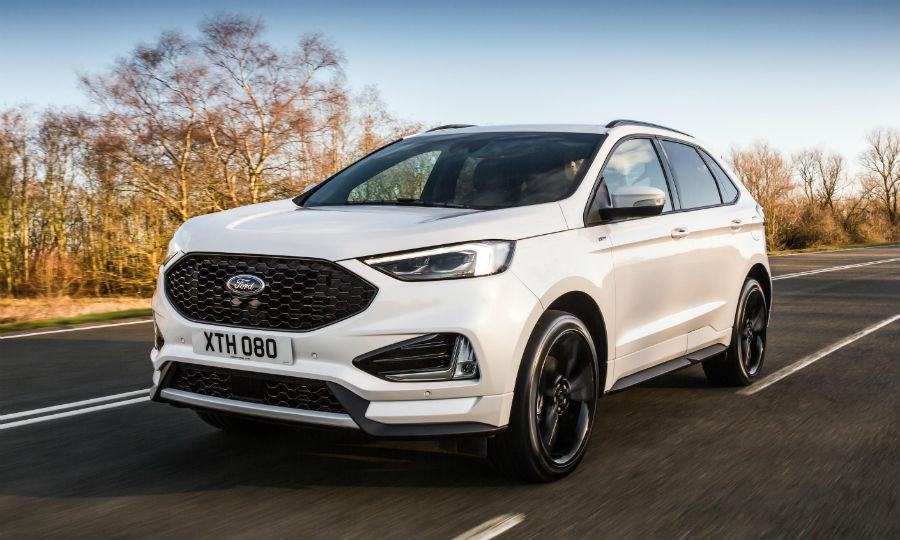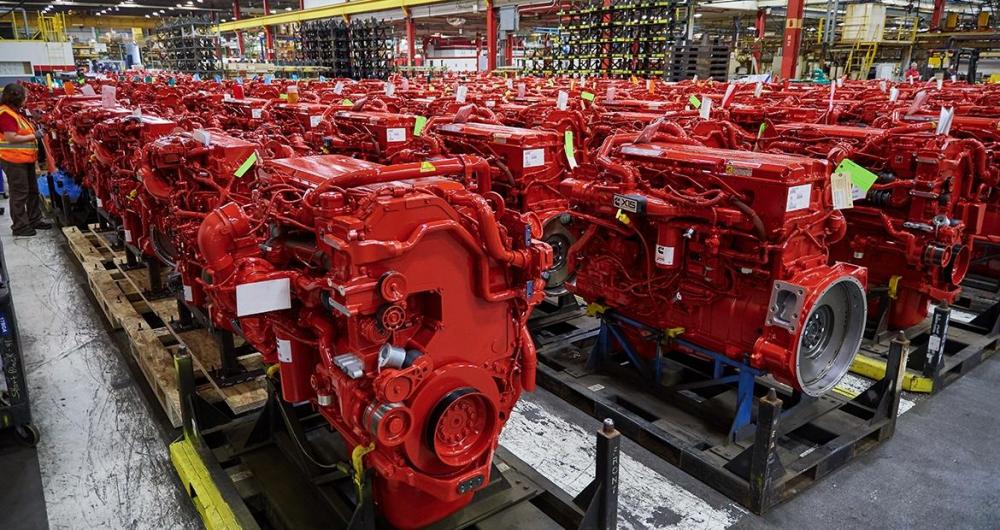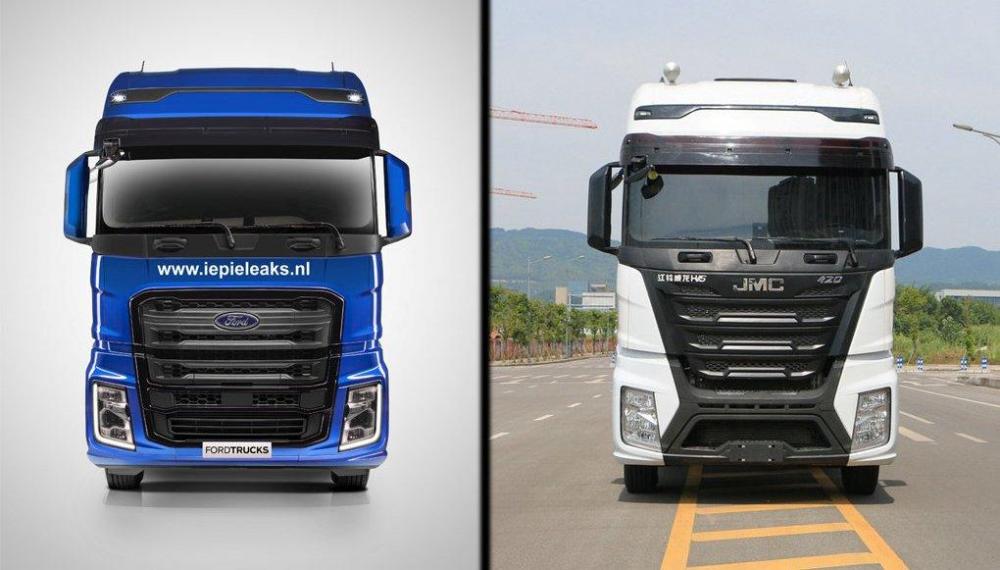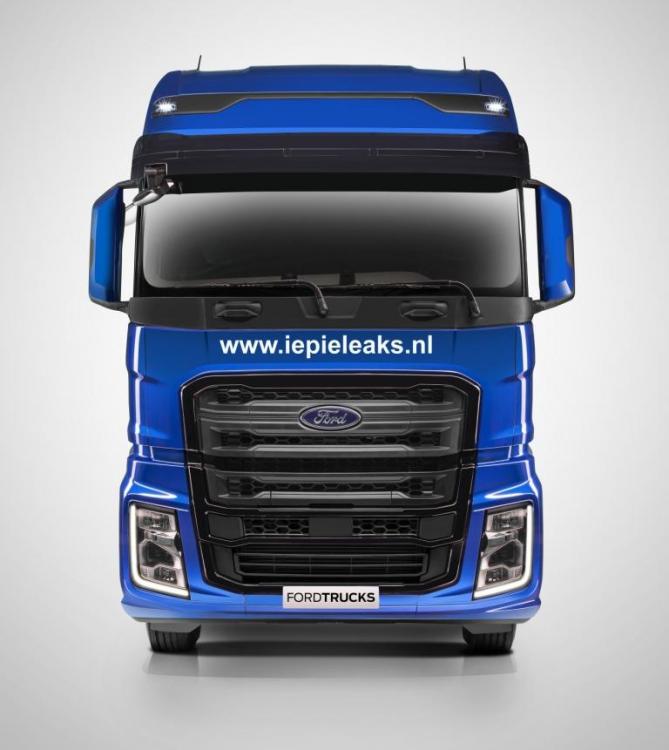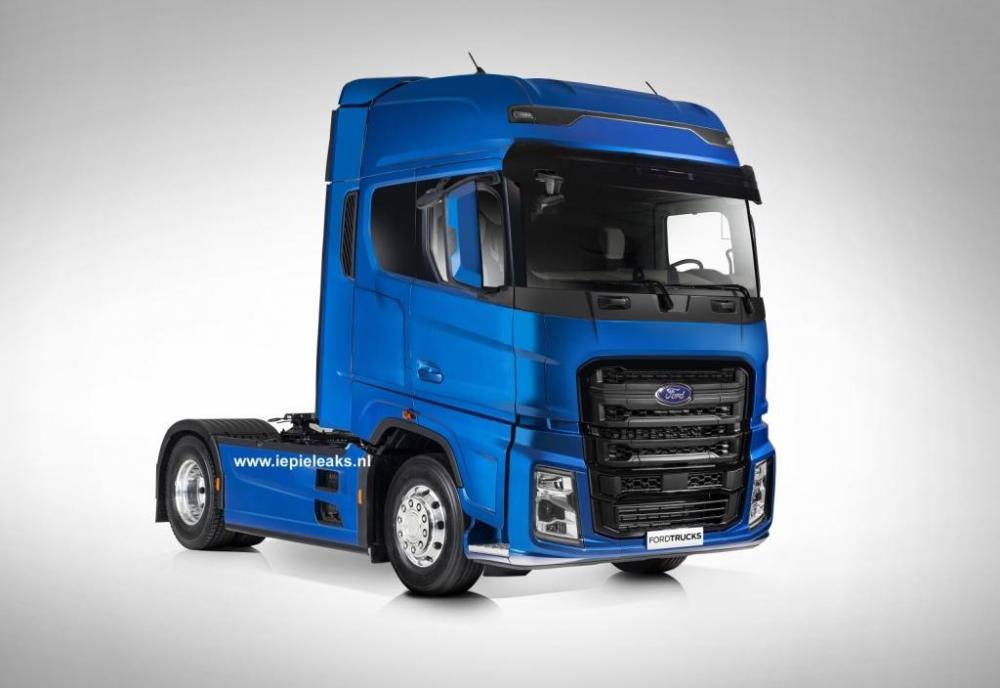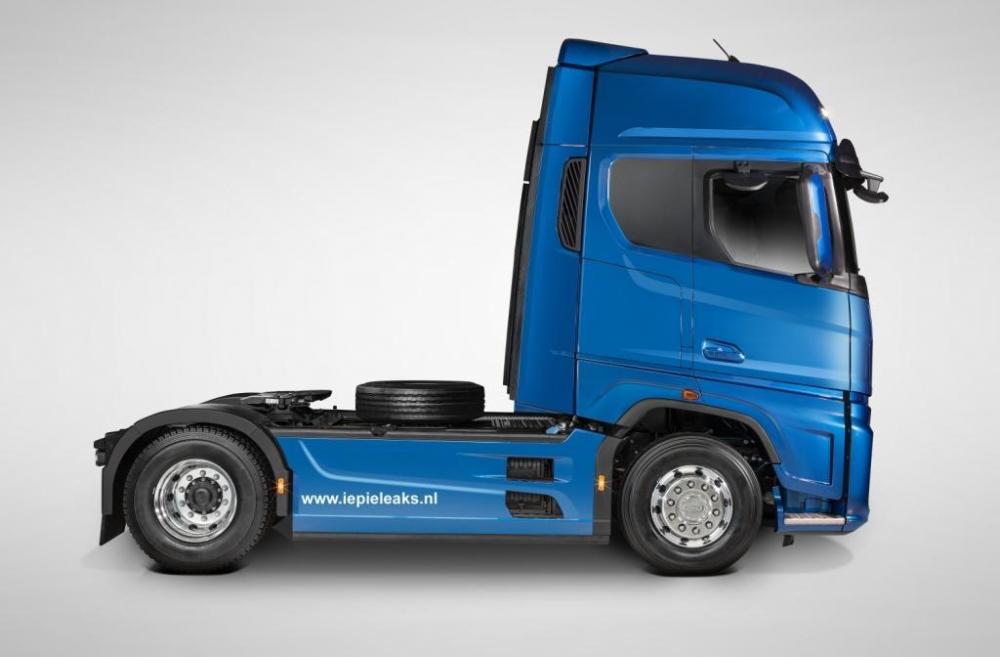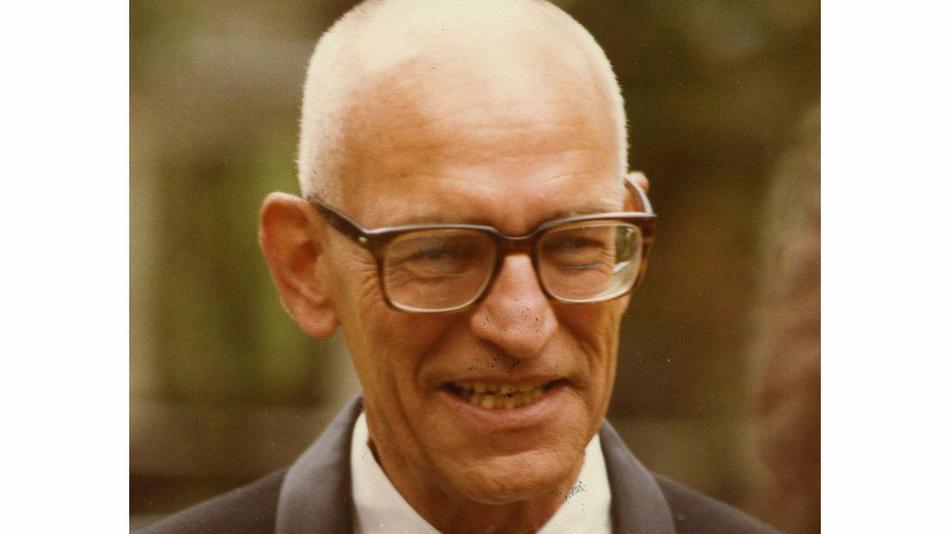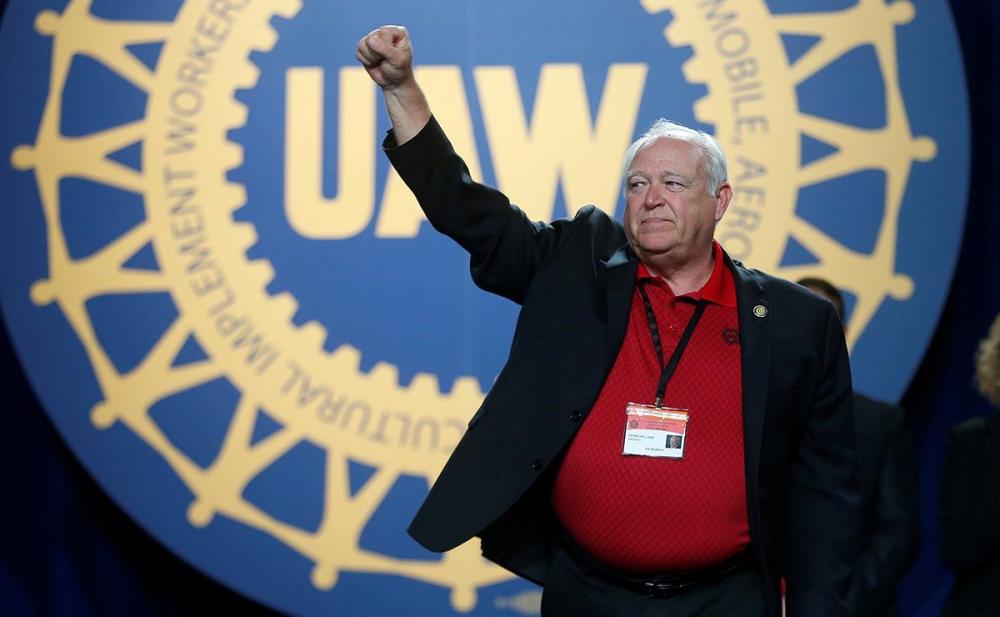
kscarbel2
Moderator-
Posts
18,927 -
Joined
-
Days Won
114
Content Type
Profiles
Forums
Gallery
Events
Blogs
BMT Wiki
Collections
Store
Everything posted by kscarbel2
-
Davey Johnson, Car & Driver / July 27, 2018 When Blake Greenfield took a green, 70,000-mile, 2014 Silverado in trade at his small Chevrolet dealership in Wells, Minnesota, his salesmen razzed him that the truck would be tough to move. The color wasn’t particularly desirable in the area surrounding the town of fewer than 2500 residents, and Greenfield figured they were right. Then he thought of two things: his own surname, and a 1973 Chevy truck that his father had owned when Blake was a kid growing up in Iowa. The first part was simple. “In all of our advertising,” explains Greenfield, “we try to use the color green.” The second part, inspired by his dad’s old red-and-white pickup, took a little more know-how and imagination. His cousin Ray owns a vinyl shop and wound up spending hours looking at trucks, taking measurements from photos of old two-tone “Squarebody” C/K Chevy pickups of the ’70s and ’80s, and figuring out how the classic scheme might apply to a modern Silverado. To go along with Ray’s design handiwork, Greenfield and his crew added a lift kit, sourced some wagon-style wheels that’d evoke the period in question, tacked on Cheyenne Super 10 and Big 10 labels like those worn by the Big 10 special-edition Chevy pickup of the late 1970s, and added chrome door handles and mirror caps. But they still weren’t entirely sure what the finished product was going to look like until the truck rolled out of Ray’s workshop back in December of last year with the vinyl applied to the truck’s flanks. Everyone at Blake Greenfield Chevrolet Buick loved the truck, and Greenfield figured it’d make him stand out around town and perhaps attract some business into his store. It turned out to be a little more than that. When photos taken by a local found their way onto the internet, Greenfield’s phone began ringing. The friendly Midwesterner still seems taken aback by the reaction. “It seemed like it went viral almost overnight. We had calls from all over the U.S.” Since then, trucks—done both with vinyl applique and actual two-tone paint jobs—have gone out to far-flung locations such as Texas (naturally), New York, Pennsylvania, Ohio, Michigan, and Arkansas. Two Silverados currently undergoing the conversion are both destined to stay home in Minnesota, though. Greenfield is pretty sure they’re the twelfth and thirteenth examples to be built since the calls began. And just in case you’d care to purchase the very pickup that started the minor furor, Greenfield notes that his 2014 is up for sale, although he admits he isn’t sure he should part with it. If you’d like to commission your own, both his Wells location and his other dealership, Spring Valley Chevrolet Buick, not far from Rochester, Minnesota, are both happy to take your order. We’ll have ours in Colt Seavers–spec brown and gold, thank you very much. .
-
Why did Ford allow their trademark hold on the name "Courier" to lapse in the first place?
-
Is Ford Looking to Bring a Car-Based Pickup Truck to the U.S.? Greg Fink, Car & Driver / July 28, 2018 Ford is rumored to be working on a small subcompact pickup truck that may also make its way to the North American market. The new truck is expected to serve as the informal replacement to the Ford Courier—a small pickup that was sold in countries such as Brazil and Mexico. Whereas the previous Courier was based on old Ford Fiesta components, Automobile Magazine reported the new model will share its underpinnings with the latest global Ford Focus compact car. Supporting the model’s North American prospects: Ford has applied to trademark the Courier name with the United States Patent and Trademark Office. The nameplate was previously applied to a Mazda-based compact pickup truck Ford sold in the United States throughout the 1970s and early 1980s. More recently, Ford has used the name on the Transit Courier small van that is sold overseas, and it’s possible that Ford’s trademark application is in reference to that vehicle. Although Ford spokesperson Dawn McKenzie declined comment on the Courier, she said in an emailed statement that the company is “significantly expanding our North America lineup with all-new vehicles and entering new segments with fresh designs and white-space silhouettes that will position us for even more growth.” Beyond the Range: The Visual History of Ford’s Compact Pickups Everything You Need to Know About the 2019 Ford Ranger Put to Bed: These Are the Forgotten Pickup Trucks, Volume I Where that leaves the sub-Ranger-sized pickup remains to be seen. Should it materialize, the Courier can expect to compete directly with the production Hyundai Santa Cruz compact pickup, which is expected to go on sale in the next few years. .
-
The new alloy was borne out of a project that used [the U.S. taxpayer's] federal Oak Ridge National Laboratory's Titan supercomputer and included [foreign aggressor's] Fiat Chrysler engineers and casting experts from Nemak North America, the giant Mexico-based supplier of engine blocks and cylinder heads. Italy and Mexico score. U.S. taxpayers lose again.
-
Bringing Uncle Sam into the supply chain Richard Truett, Automotive News / July 28, 2018 A new engine program at Fiat Chrysler reveals an innovative way to solve the task of creating an advanced new material to improve engine efficiency and reduce vehicle weight. The automaker enlisted the help of engineers at the federal Oak Ridge National Laboratory in Tennessee. Material development is usually the stuff of advanced research — the sort of work that r&d departments might spend years toiling away at with little profit-making result. For FCA's project, engineers have been able to bring a new grade of heat-tolerant aluminum alloy to market faster by taking advantage of research already being done by government scientists at Oak Ridge. It's rare when a government-funded initiative makes its way into a commercial engine. The new alloy was borne out of a project that used Oak Ridge's Titan supercomputer and included Fiat Chrysler engineers and casting experts from Nemak North America, the giant Mexico-based supplier of engine blocks and cylinder heads. Engine designers have always known that improving an engine's thermal efficiency — the amount of energy contained in fuel that is converted to work — is one major key to extracting more power and fewer emissions from a motor. Most of today's mass-produced aluminum cylinder heads are made of what are referred to as 319 and 356 grade alloys, which start to weaken and distort at combustion temperatures up to around 390 degrees Fahrenheit. There are grades of alloy that can withstand higher combustion temperatures without damage, but they are expensive and can be difficult to cast. The collaboration of Oak Ridge, FCA and Nemak engineers started in 2014 under a $3.5 million Department of Energy Cooperative Research and Development grant. It resulted in a new aluminum alloy that will allow engines to run about 180 degrees Fahrenheit hotter and can be cast on existing production machinery. The implications are significant. 572 degrees The new alloy, called 16HT, raises the operating threshold to 572 degrees Fahrenheit. FCA estimates the new alloy will cost only about 7 percent more than 319 and 356 alloys. There is no estimate yet of how much fuel efficiency will be improved. In fact, FCA has not even announced which of its engines will first use the new alloy. But the first application likely be a hard-working downsized turbo four-cylinder that would replace a larger engine in a heavy vehicle. Fiat Chrysler has a 2.0-liter turbo launching now in the redesigned Jeep Wrangler. In a blog posted recently on FCA's media site, the company says the new alloy is at least a few years away from production. But about 100 prototype cylinder heads cast by Nemak are now undergoing testing at FCA. Amit Shyam, Oak Ridge's lead researcher on the project, says the new alloy could be used elsewhere on engines, perhaps replacing heavy cast iron exhaust manifolds or in turbocharger housings. But cylinder heads are likely the first use because the benefits are largest. "Cylinder head alloys are the most demanding application in an engine if you consider the fact that the casting is smaller than the cylinder block, but more complex because other parts are attached to it," he says. "It's more demanding from a thermal-mechanical aspect as well. The head sees many thermal cycles. If that was solved, it would be a very major advancement for better engine materials. So, that's why we focused on cylinder head alloys for initially lighter-duty automotive engines." The big brain FCA engineers credit Oak Ridge's Titan supercomputer with playing a big role in the breakthrough. Titan, the third most powerful supercomputer in the United States, used a predictive development process known as an "ICME" — short for integrated computational material engineering. It virtually created about 50 alloy blends. The computer was then programmed to "test" the heating and cooling characteristics of the virtual metals. The seven blends with the highest potential were then subjected to more stringent testing. "The Titan and ICME let the team focus only on truly promising candidates instead of spending time on trial and error," Gregg Black, a senior manager in FCA's advanced powertrain engineering said in the blog post. "It's like Star Wars stuff for us, creating new alloys in the computer without having to pour it." That's where supplier Nemak comes in. The company, ranked No. 52 on Automotive News' list of the top global parts suppliers with annual sales of $4.5 billion, is a major supplier of cast engine parts to nearly all of the world's major automakers. Nemak also makes expensive low-volume castings from an alloy known as R350 for several manufacturers of high-end vehicles. Nemak engineers brought a sample of R350, which Oak Ridge examined down to the molecular level to understand how the metal could withstand high heat without cracking, tearing or deforming. "We spent a lot of money in the first 18 months trying to understand what makes R350 work, and what we found out is that we could make R350 do what it does without the expensive elements," says Shyam. "It was not the nickel and cobalt in it that everyone thought made it much more temperature resistant. It was some of the other elements that were there in smaller amounts." Shyam said researchers using powerful electron microscopes studied the atomic resolution of the alloy in cross sections of areas known as precipitates, or the strengthening elements. From that, Oak Ridge was able to develop the 16HT alloy so that it was able to be cast. Jose Talamantes-Silva, Nemak's research and development manager, said one of the major requirements of the project is that 16HT had to be castable on existing production machinery, a requirement that would save millions of dollars in tooling costs. But the new alloy yielded another bonus: It proved to be a drop-in replacement for today's alloy. "The same components can be used," Talamantes said. "In the current testing we are doing with FCA, there is no need to change any of the components. "That means existing gaskets, valve seats and guides, camshafts and seals used on today's heads can be transferred to heads cast in the new alloy." It also saves millions in product development costs. Talamantes says Nemak is meeting with FCA almost weekly to share data on how the heads are performing, and he expects engine testing to be complete by December. Tightening global emission regulations could see the new alloy replacing the existing blends, and once volume rises, Talamantes says, cost will come down. Material revolution Executives at other suppliers say thermal efficiency gains in innnovations such as the new alloy shows there are still improvements left to be wrung out of the internal combustion engine before it gives way to the electric motor. "If you look in broad terms, our engines, the ones we've recently developed, have about 38 percent thermal efficiency, some of the highest in the industry," says Hal Reisiger, CEO of Cosworth Group Holdings. "If you can get to 40 percent — which we will — you are as efficient as a fossil fuel-fired power generating station which is used to charge an electric vehicle," he added. Cos-worth, the British firm best known for building high-performance engines, recently opened a new North American headquarters in suburban Detroit. At Tenneco, a supplier of exhaust system components, such as catalytic converters and mufflers, Chief Technology Officer Ben Patel says the industry is in the midst of a "material science revolution that could change every part of the car in the years ahead." "When you are dealing with emissions, heat is your friend. Whether it is a catalytic converter or an SCR diesel catalyst, the chemical transformation you are trying to enable all happens faster the hotter it gets," he says. "Twenty years from now, maybe even less than that, there will be a whole new range of materials on vehicles that do not exist today." New alloy The new Oak Ridge alloy is one of those materials. Today's alloy cylinder heads rely on silicon as the strengthening component. But the lab researchers discovered that copper can take the heat without deforming. "When we focused on copper, other people in the industry almost laughed us off, saying we'd never be able to cast that," FCA's Black says. "We knew there was competition, including other teams working at Oak Ridge National Lab, but we outperformed everyone on this." The project yielded four patent applications, that when approved, will be owned by Nemak, FCA and Oak Ridge National Lab. Shyam says about 35 people from all three organizations worked on the project, each bringing their own expertise. "It was a highly collaborative effort. Nemak is very good at foundry-related issues and castings, what can and cannot be done in the foundry production process. FCA is very knowledgeable about what happens when you are running an engine, what can happen and what is needed from the alloy. The criteria that will make it successful. We were able to bring a lot of our fundamental ally design expertise. We were able to bring some of the best characterization tools available to bear on this problem." Shyam acknowledges that it was a bit of a long shot developing the new alloy. "We took a somewhat risky approach to understanding mechanistic approach, not confident when we started," he said. "We do think there will be a lot of internal combustion engines that will be made in the coming years, and if we are able to contribute to the efficiency of those engines, that's what you dream of doing as an applied researcher in the national labs." .
-
Limit of 300 Gliders Per Small Manufacturer Suspended, EPA Says
kscarbel2 replied to kscarbel2's topic in Trucking News
EPA Reverses Course, Will Enforce Rule Limiting Production of Glider Trucks Transport Topics / July 27, 2018 U.S. Environmental Protection Agency acting Administrator Andrew Wheeler has reversed a controversial decision made earlier this month that would have allowed the proliferation of glider kit trucks until the end of 2019. In a July 26 memo to the agency’s enforcement chief, Susan Bodine, Wheeler said a “no-action assurance” order blocking enforcement of the glider kit trucks provision in the 2016 Obama administration’s Phase 2 Greenhouse Gas Heavy Truck Rule is “not in the public interest.” “The Office of Enforcement and Compliance Assurance has a general guidance limiting the circumstances under which the agency will consider issuing no-action assurances,” Wheeler wrote. “The 1995 restatement of that policy states that the principles against the issuance of a no-action assurance are at ‘their most compelling in the context of rulemakings.’ OECA guidance is clear that a no-action assurance should be issued only in an ‘extremely unusual’ case when the no-action assurance is necessary to serve the public interest, and only when no other mechanism can adequately address that interest.” Bodine’s “no-action assurance” memo was dated only a day after then EPA Administrator Scott Pruitt resigned amid a dozen ethics investigations. In November, the agency issued a proposed rule to repeal the Obama-era regulation, questioning the notion that the gliders were big polluters and whether EPA even had the authority to regulate the gliders. Wheeler’s action came July 26, only days after an environmental coalition and 16 state attorneys general filed separate requests for review by the U.S. Court of Appeals for the District of Columbia, claiming that not enforcing the glider provision in the 2016 Phase 2 Heavy Truck Greenhouse Gas rule would allow thousands of the “super polluting” glider trucks on U.S. roadways. The court quickly issued a temporary stay of the EPA nonenforcement plan while it considers whether to approve or deny the emergency motions filed by environmentalists and the states, which said allowing the production and sale of more than 300 per-manufacturer gliders — “new heavy-duty trucks manufactured with highly polluting, refurbished engines that do not comply with modern emissions standards” — is unlawful. “This is a huge win for all Americans who care about clean air and human health,” Fred Krupp, president of the Environmental Defense Fund, one of the lawsuit plaintiffs, said in a statement. “These super-polluting diesel freight trucks fill our lungs with a toxic stew of pollution. EPA’s effort to create a loophole allowing more of them onto our roads was irresponsible and dangerous. We hope their decision to withdraw that loophole puts a firm and final end to this serious threat to our families’ health.” Glen Kedzie, energy and environmental counsel for American Trucking Associations, told Transport Topics, “EPA’s reversal of its prior decision to not enforce glider vehicle provision under the final Phase 2 rule was a welcome announcement, which reaffirms the agency’s legal authority and responsibility to the public to close the dangerous emissions loophole created by a small special interest group of manufacturers. We will await EPA’s next steps as this issue continues to evolve.” In their emergency motion, the environmentalists said the trucks are “poised to spend their lifetimes emitting many times more smog-forming nitrogen oxides, lung-damaging particulate matter and cancer-causing toxics than lawfully built heavy-duty trucks. Relief is urgently needed from EPA’s unlawful action in order to avert substantial and irreparable public-health consequences.” The attorneys general in their court brief said, “Testing of glider vehicles conducted by EPA in 2017 showed even greater emissions impacts: NOx emissions were as much as 43 times higher than emissions from compliant vehicles, and PM emissions as much as 450 times higher. NOx and PM are linked to serious adverse health effects, including increased incidence of respiratory and cardiovascular disease and premature death.” -
Limit of 300 Gliders Per Small Manufacturer Suspended, EPA Says
kscarbel2 replied to kscarbel2's topic in Trucking News
16 States Join Request for Court Review of EPA’s Glider Decision Transport Topics / July 24, 2018 Attorneys general from 16 states have joined a request that an appeals court review a decision by U.S. Environmental Protection Agency officials to not enforce an Obama-era regulation limiting the production of glider kit trucks to 300 units per manufacturer. The legal action, filed with the U.S. Court of Appeals for the District of Columbia, has been consolidated with a similar action filed by three environmental groups also attempting to block EPA’s decision. The appeals court on July 18 issued a temporary stay blocking the EPA from failing to enforce the regulation, saying it will make a decision sometime after hearing arguments from all of the parties by the end of the month. “EPA’s action concerns regulatory restrictions on the production and sale of ‘gliders’ — new heavy-duty trucks manufactured with highly polluting, refurbished engines that do not comply with modern emissions standards,” said the attorneys general court filing. “In both substance and process, EPA’s action is unlawful.” The states challenging the EPA decision are California, Delaware, Illinois, Maine, Maryland, Massachusetts, Minnesota, New Jersey, New Mexico, New York, North Carolina, Oregon, Pennsylvania, Vermont and Washington, as well as the District of Columbia. EPA’s decision circumvents Congress’ established limits on the agency’s authority to suspend or stay a rule, as well as limits on its authority to exempt new motor vehicles or engines from regulation, the attorneys general said. The decision “also constitutes a complete reversal of EPA’s position, reflected in the 2016 [Obama-era] rule, that it is mandated to regulate glider emissions — a reversal made without adequate explanation or good reason,” the attorneys general argued in court documents. “Had EPA engaged in the public notice and comment process required to stay or amend a regulation, these faults would have been exposed prior to consummation. But EPA’s action provided no opportunity for public input.” An emergency motion also was filed on July 17 by the Environmental Defense Fund, Center for Biological Diversity and Sierra Club, in response to a July 6 agency memo from EPA enforcement chief Susan Bodine suspending for a year enforcement of the cap on the production and sale of glider kits. Bodine’s “no-action assurance” memo was dated only a day after then-EPA Administrator Scott Pruitt resigned amid a dozen ethical investigations into some of his official actions. In November, the agency issued a proposed rule to repeal the Obama-era regulation, questioning the notion that the gliders were big polluters and whether EPA even had the authority to regulate the gliders. EPA’s proposed repeal of the glider truck rule drew more than 3,500 written comments, and was overwhelmingly opposed by nearly all of the speakers at a public hearing by the agency. However, in her memo, Bodine said suspension of the Obama regulation for one year was needed to allow the agency time to consider “several matters” before it could take a final action on the proposed repeal. But in their emergency motion, the environmentalists said the trucks are “poised to spend their lifetimes emitting many times more smog-forming nitrogen oxides, lung-damaging particulate matter and cancer-causing toxics than lawfully built heavy-duty trucks. Relief is urgently needed from EPA’s unlawful action in order to avert substantial and irreparable public-health consequences.” Glen Kedzie, energy and environmental counsel for American Trucking Associations, said the court’s action to temporarily suspend the enforcement directive reaffirms his group’s position. “EPA has both the legal authority and responsibility to the public to close this dangerous emissions loophole created by a small special interest group of manufacturers,” Kedzie told Transport Topics on July 18. “As the court next moves to consider a permanent suspension, I am confident that the science and the law will fall squarely on our side.” The attorneys general filing said that even by EPA’s own estimates, the model year 1998-2001 engines that typically are used in glider vehicles emit 20 to 40 times more particulate matter and oxides of nitrogen than engines that conform to current emissions standards. “Testing of glider vehicles conducted by EPA in 2017 showed even greater emissions impacts: NOx emissions were as much as 43 times higher than emissions from compliant vehicles, and PM emissions as much as 450 times higher,” the attorneys general said in their court briefs. “NOx and PM are linked to serious adverse health effects, including increased incidence of respiratory and cardiovascular disease and premature death.” -
Ford adds formerly Raptor-exclusive engine to 2019 F-150 Limited Michael Martinez, Automotive News / July 27, 2018 DETROIT -- The most expensive version of the F-150 pickup is adding a Raptor roar in Ford's latest thrust in Detroit's hypercompetitive truck sector. Ford Motor Co. said this week it will offer a high-output 3.5-liter EcoBoost engine -- which has been available only on the F-150 Raptor performance pickup -- on its 2019 F-150 Limited trim. The engine is the most powerful in the F-150's lineup, producing 450 hp and 510 pound-feet of torque. It will be paired with the automaker's 10-speed transmission. Ford did not disclose pricing, but the 2018 Limited trim starts at more than $60,000. The 2019 model will include a suede headliner, leather-topped instrument and door panels, ash swirl wood trim and special graphics. The interior also will feature leather-wrapped massaging seats, a heated steering wheel and heated-or-cooled front seats. Technology will include standard adaptive cruise control, standard precollision assist with automatic emergency braking, active park assist and a lane-keeping system. It will come with the Sync 3 infotainment system and 4G LTE Wi-Fi, among other features. The 2019 F-150 Limited will go on sale this year. Ford's F series is on pace to break a sales record set in 2004, although it will face increased competition the rest of the year as crosstown rivals introduce redesigned versions of the Ram 1500, Chevrolet Silverado and GMC Sierra. In addition to the new engine coming on the Limited trim, Ford this year offered an F-150 diesel engine option for the first time. .
-
Hackett does not inspire confidence, particularly at a time when Ford is making so many questionable decisions. If Ford gets down to $8, I still would invest elsewhere.
-
Ford seeks European profitability with shift to crossovers, vans Nick Gibbs, Automotive News / July 27, 2018 Ford is redirecting spending in Europe away from cars to focus on more profitable crossovers and commercial vans to help return its operations in the region to profit. Hit by Brexit and a big consumer switch to crossovers, Ford’s European operations swung to a $73 million pretax loss in the second half from an $88 million profit last year. Announcing the results on Wednesday, CEO Jim Hackett said: “We're extremely dissatisfied with our performance in Europe.” Ford now expects a full-year loss in Europe after earning $234 million in the region last year. CFO Bob Shanks said the bulk of Ford’s European vehicle range was unprofitable. “The low-performing part of our portfolio represents a majority of our volume, revenue and capital deployed in the region,” he said. This consisted “principally of cars and multi-activity vehicles [minivans] such as C-Max,” he said. Ford’s Transit van, Kuga crossover and Ranger pickup and “selected imports” are selling profitably in Europe, Shanks said, without naming the imported vehicles. They are likely to include the Edge midsize crossover and the Mustang sports car. Shanks said the vehicles represented more than 200 percent of Ford’s profits in Europe, despite accounting for less than half of its volume and revenue. Europe needs reboot Jim Farley, Ford’s head of global markets, said commercial vans are earning 13 percent profit margins for the automaker in Europe. Ford is shifting its focus to concentrate on vans and crossovers to hit its long-term target of a 6 percent margin in the region, Farley said. “Clearly we have to redesign Europe, centering the operations on our profitable LCV business,” he said. SUVs were also part of that plan. Capital allocation plans now align with the SUV and the LCV business opportunities, Farley said. Ford is making the right move, said Ian Fletcher, principal analyst at IHS Markit. “Ford cannot afford to just tinker. They have undertaken restructuring in the past and they’re still moaning about the lack of profitability in the region. They have to take a big step or they will be in the same situation down the line.” Ford has attempted to boost margins on its Focus compact and Fiesta subcompact cars by offering different variants designed to increase its selling price, including an Active crossover-inspired version and an upscale Vignale-badged model. The tactic isn’t paying off. “New products are delivering incremental profit but lower than planned,” Ford indicated in its second-quarter regulatory filing. Margins were being “compressed” by a “weaker channel mix, lower net pricing and exchange headwinds,” the company said. Brexit hit Ford has been hit by exchange headwinds mainly from the UK, its largest market in Europe, after the British pound lost value following the country’s decision to leave the EU. The pound’s fall explains the “majority of our deterioration” in profit in Europe, Farley said. “In 2016 we made $1.2 billion in Europe and most of it was in the UK. Brexit and the continued weak sterling has been a fundamental headwind for our European business,” Farley said. He acknowledged that Ford has been slow to expand in the crossover segment in Europe. “One of our underlying issues is that we are behind on the shift to utilities and now our portfolio under-indexes on this highly profitable and growing segment,” he said on Wednesday’s earnings call. Ford currently sells three crossovers in Europe: the small EcoSport, compact Kuga and midsize Edge. Kuga and EcoSport sales in Europe reached a record in the second quarter, Ford said. Ford described its Kuga as “aging” in its filing and said new launches will increase its product mix by 2020, indicating new models are coming soon. A Fiesta-based replacement for the EcoSport is due in 2020, analyst firm LMC Automotive predicts. Products under threat Ford singled out the C-Max compact minivan on its investor call as under-performing in Europe, indicating it could stop production of the car in the region. Sales of the C-Max slid 18 percent in the first half to 31,888, figures from JATO Dynamics show. Also under threat is the Mondeo midsize car, which is a version of the U.S. Ford Fusion. Ford has said it would phase out U.S. sedan sales, including the Fusion, by 2020. The related S-Max and Galaxy large minivans could also be dropped. Alongside redirecting r&d spending away from cars and toward vans and SUVs, Ford said it also planned to continue to “aggressively” cut costs and get new products to market quicker in Europe. The company said in June it would close its Blanquefort gearbox plant in Bordeaux, southwest France, if no buyer was found. Partnering up On Wednesday’s call CEO Shanks said Ford also will rely more heavily on partnerships to turn Europe around. “It's important to recognize that partnerships, which are a part of our fitness toolkit, are already an integral part of our European operations and going forward we expect them to play an even greater role,” Shanks said. Ford has a long-term partnership with PSA Group on engines. In June it signed an agreement with Volkswagen Group for a potential an alliance on commercial vehicles, as well as other, non-specified projects. .
-
Did you know what happened 65 years ago today ?
kscarbel2 replied to mrsmackpaul's topic in Odds and Ends
Along with the Vought F4U Corsair and Focke Wulf TA 152, the Hawker Sea Fury (pictured in the link) ranks in my top five of piston engined fighters of all time.- 1 reply
-
- 1
-

-
Ford fell to $9.84 today, a new 52-week low for the company. I read today's close was the lowest in five years.
-
Cummins hits production milestone at its Jamestown engine plant
kscarbel2 replied to kscarbel2's topic in Trucking News
Cummins Inc. Celebrates Production of Two Millionth Engine at Jamestown Engine Plant Cummins Press Release / July 26, 2018 Two of the company's valued customers, Navistar and Penske Truck Leasing, are the recipients of the two millionth engine. Today Cummins Inc. (NYSE:CMI) announced the production of the two millionth engine at its Jamestown Engine Plant (JEP) in Jamestown, New York. JEP remains one of the company’s largest manufacturing facilities; it accounted for 14.7 percent of Cummins total engine production in 2017. Cummins acquired the more than one million-square-foot facility in 1974, using it initially to manufacture engine components. Since building their first engine in 1981, production in recent years typically exceeds 100,000 engines annually. Jamestown is home to the production of Cummins heavy-duty engine technologies including the X15, ISX12, X12, ISM11 diesel engines and ISX12N natural gas engine as well as historically the ISX15 diesel engine and ISX12 G natural gas engine. "We credit much of our success to the hard-working employees that commit themselves every day to provide products and services that meet or exceed our customers’ expectations," said Anna Dibble, Cummins JEP Plant Manager. "They work to provide this company with quality products that we feel proud to stand behind. They are also committed to improving where they live, JEP annually contributes $1 million back to the community through charitable donations." JEP employees are committed to an environment where the key values of integrity, diversity & inclusion, caring, excellence and teamwork encourage employees to work together to power a more prosperous world. With 1,700 employees working in the facility, JEP has grown about 20 percent since 2012 and is the largest private employer in Chautauqua County, New York. International trade has been the single most important contributor to Cummins growth and hiring for nearly two decades. Half the company’s business is outside of the U.S. Because of its global presence and ability to export, Cummins suppliers, which are primarily small and medium-sized businesses, are also growing. "Jamestown Engine Plant plays an important role in our company's ability to produce a broad range of engines for different customers around the world serving a wide variety of markets," said Brett Merritt, Cummins Vice-President On-Highway Engine Business. "From the first engine built at the plant in 1981 to our innovative technologies today, which have reduced emissions by 98 percent, JEP provides engines that offer solutions that represent the strength of our company and the power, reliability and durability customers have come to expect with a Cummins heavy-duty engine. We will continue to invest in innovations in our diesel and natural gas products, and JEP will be important to Cummins, our customers and our OEM partners for many decades to come.” Two of our valued customers, Navistar and Penske Truck Leasing, are the recipients of Cummins two millionth engine. "Navistar and Cummins have a strong history of working together to serve our customers," said Michael Cancelliere, President, Truck and Parts, Navistar. "Navistar is excited that Cummins’ two millionth engine is going to one of our mutual customers in our International® LT Series truck. We look forward to continuing our partnership with Cummins to bring value to our customers." . -
Close-ups of the China market JH62X (4 pages). http://www.360che.com/news/180720/98563.html
-
Here we can compare the styling of global market H62X and the China market JH62X from the Jiangling-Ford heavy truck joint venture. Featuring a European standard 2.5-meter-wide cab, flat floor design, and Euro-6 capable 12.7-liter Ford Ecotorq engine rated up to 500 horsepower, paired with the superb ZF Traxon transmission, the truck is ready for sale in the European Union (EU), North America and all other global markets. Interestingly, Ford Trucks plans to introduce its own proprietary AMT heavy truck transmission for the new Cargo by 2020. High definition photos here - https://iepieleaks.nl/first-photos-of-new-heavy-ford-truck/ .
-
Commercial Carrier Journal (CCJ) / July 26, 2018 Cummins on Thursday announced the production of its two millionth engine at its Jamestown Engine Plant (JEP) in Jamestown, New York – a facility which accounted for 14.7 percent of Cummins total engine production in 2017. Cummins acquired the more than one million-square-foot facility in 1974, using it initially to manufacture engine components. Since building their first engine in 1981, production in recent years typically exceeds 100,000 engines annually. Jamestown is home to the production of Cummins heavy-duty engine technologies including the X15, ISX12, X12, ISM11 diesel engines and ISX12N natural gas engine as well as historically the ISX15 diesel engine and ISX12 G natural gas engine. “We credit much of our success to the hard-working employees that commit themselves every day to provide products and services that meet or exceed our customers’ expectations,” says Anna Dibble, Cummins JEP Plant Manager. “They work to provide this company with quality products that we feel proud to stand behind. They are also committed to improving where they live, JEP annually contributes $1 million back to the community through charitable donations.” With 1,700 employees working in the facility, JEP has grown about 20 percent since 2012 and is the largest private employer in Chautauqua County. “Jamestown Engine Plant plays an important role in our company’s ability to produce a broad range of engines for different customers around the world serving a wide variety of markets,” says Cummins Vice President of On-Highway Engine Business Brett Merritt. The milestone engine was spec’d in an International LT Series truck for Penske Truck Leasing.
-
Just as the price of lumber has skyrocketed over the summer under the excuse that there's a truck shortage, when in fact there is no shortage of trucks. It's tight at times, but certainly no shortage. Yet another scam to increase revenues.
-
Alfred W. Barry Jr., former Mack Trucks sales manager, dies
kscarbel2 replied to kscarbel2's topic in Trucking News
I actually knew Mr. Barry when he was sales manager at Mack Truck's massive Baltimore factory branch*. The legendary Ed Parker was branch manager. Quite a Mack man. * https://www.bigmacktrucks.com/topic/43698-the-factory-branches-of-mack-trucks-inc/ -
The Baltimore Sun / July 16, 2018 Alfred Wald Barry Jr., a World War II veteran who was a former sales manager for Mack and Brockway trucks, died Friday in his sleep at Stella Maris Hospice. The Timonium resident was 94. He was the son of Alfred W. Barry Sr., an executive for General Tire Co., and Aida Kunkeli Barry, a homemaker. He was born in Buffalo, N.Y., and was raised in Philadelphia and on Park Avenue in Manhattan. Mr. Barry was the great-nephew of Lillian Wald, a suffragette who founded the Henry Street Settlement House in New York City in 1893 and was one of the founding members of the NAACP. Growing up, he spent summers at a cabin his father had built in Barryville, N.Y., just north of the historic John A. Roebling aqueduct and suspension bridge, an 1849 structure that spans the Delaware River. “We used to go there as children growing up, and I remember the sounds the planks made as we drove over the bridge. The bridge is now only opened to foot traffic,” said a son, Alfred W. Barry III of Homeland. After graduating from the Collegiate School in New York City, Mr. Barry began his college studies at the Johns Hopkins University. At the conclusion of his sophomore year, he enlisted in the Army with numerous other Hopkins students and Phi Gamma Delta fraternity brothers. The enlistment site was a store that is now the Charles Village Schnapp Shop at 29th and North Calvert streets. “His eyesight was so bad that he memorized the eye chart to be able to enlist,” his son said. Mr. Barry served in Army ordnance in the Aleutian Islands until his discharge in 1946. His decorations included the World War II Victory Medal, American Campaign Medal and Good Conduct Medal. He returned to Hopkins and in 1948 obtained a bachelor’s degree in economics. Also in 1948, he married Dolores Keating, a kindergarten teacher he had met at Hopkins when she was a graduate student. The couple first lived on Kentucky Avenue before moving to a Victorian house on Boxhill Lane in Roland Park. After leaving Hopkins, Mr. Barry began a career with Mack Trucks Inc. that ultimately spanned more than 40 years. He started at its Baltimore factory sales branch, which was then located on East 25th Street [actually 1210-28 E. 20th St ]. In 1956, the company purchased Brockway Motor Co., which also manufactured trucks, and it became a division of Mack. When Mack Trucks sold the Baltimore factory branch to Ed Parker and he relocated to Nursery Road in Linthicum Heights, Mr. Barry designed the building and oversaw its construction. At the time of his retirement in the early 1990s, he was sales manager. In the 1960s, Mr. Barry started a business servicing trucks and trailers for the old Norfolk, Baltimore and Carolina Line [NBC Line which utilzed retired WW2 Navy LSTs between Baltimore and Norfolk] at Caroline and Lancaster streets in Fells Point, until the city condemned the property for the proposed extension of the Jones Falls Expressway to join with Interstate 95 — a project that was never completed. He had also been a member of the Maryland Motor Truck Association and had represented the organization’s legislative activities in Annapolis. .
- 1 reply
-
- 1
-

-
Marchionne knew of 'serious illness' for a year Alexa St.-John, Automotive News / July 26, 2018 Sergio Marchionne received treatment for a "serious illness" for more than a year before his death on Wednesday, University Hospital Zurich said Thursday. Prior to the hospital's statement on Marchionne's health, the father of the former Fiat Chrysler Automobiles CEO's partner told Italian newspaper Corriere della Sera that Marchionne "was sick for a year" in a report published Wednesday. Pier Luigi Battezzato, the father of Manuela Battezzato, told the paper Marchionne knew his health was declining for much longer than originally reported, but never "spared himself." Battezzato said Marchionne stopped smoking a year ago after having been a notorious lifelong smoker. "A year ago he had quit smoking, it seemed that his health was improving. He never stopped," Battezzato said. "It was clear to everyone that he was not doing well. His physique had dried out and he was tired and breathed with a lot of effort. Yet he was always on the move, traveling from one part of the world to another. He has always worked and has never given up in the face of his commitments." Marchionne, who died at 66 on Wednesday, reportedly fell ill from complications following an operation. He recently underwent surgery for what was originally said to be his shoulder. Italian business website Lettera43 reported Marchionne suffered an embolism while undergoing the operation in Switzerland. "I spoke to Sergio shortly before he was operated on and he was quiet," Battezzato told Corriere della Sera. "He had even set up a meeting that was to take place these days. Then we got together for the holidays, there was a plan to bring the whole family together." Though Marchionne was scheduled to retire in April 2019, he was replaced as CEO of FCA by Mike Manley on Saturday. Marchionne had an extensive career and was well-admired by fellow executives, international political figures and labor leaders in the industry as a transformative and influential figure. Marchionne captivated the industry, especially through his innovation and entrepreneurial mindset. Marchionne's most noteworthy accomplishment was saving Chrysler from bankruptcy in 2009 and combining it with Fiat to create the global automaker it is today. Marchionne and Manuela Battezzato were partners for almost a decade, the report said. In addition to Manuela, Marchionne is survived by two adult sons from a former marriage. "Sergio's intervention was supposed to be simple," Battezzato told Corriere della Sera . "The worst has happened. I don't know, sometimes I think that if they hadn't gone to Switzerland maybe it would have been different." Battezzato said his daughter would come back home to Alpignano following Marchionne's funeral. "One could write a book about [Marchionne]. It cannot be reduced to a few words," Battezzato said. "He did extraordinary things, but he was a simple person. There was nothing mundane about him. His life was all about work and family."
-
Ex-UAW head Williams told officials to misappropriate funds Alexa St.-John, Automotive News / July 26, 2018 DETROIT -- Recently retired UAW President Dennis Williams has been implicated by a former union official in the ongoing federal corruption probe involving the misuse of joint training center funds with Detroit automakers. Williams, according to a Thursday report from The Detroit News, is the "high level" UAW official named in a plea agreement released Monday that was reached with Nancy Adams Johnson, former top administrative assistant to ex-UAW Vice President Norwood Jewell. Johnson, according to the deal, said the unnamed leader directed senior leaders to use automaker funds from the joint training centers as a way to reduce costs to the UAW's budget. Williams has not been charged in the investigation. He told Automotive News in May that he had not been indicted or inverviewed by federal prosecutors. Johnson's plea agreement states: "Sometime in 2014 or 2015, a high-level UAW official directed senior UAW officials to use money supplied by automobile manufacturing companies through joint UAW training centers to pay for travel, including travel solely for purported union business, as well as lavish meal and other entertainment costs of senior UAW officials and their friends, family and allies. "This directive was issued in order to reduce costs to the UAW budget from such expenditures because the UAW's budget was under pressure," the document states. These directives would come around the same time the UAW was facing significant financial pressure in 2014, when members approved the first increase in membership dues since 1967. Johnson pleaded guilty to one count of conspiring to violate the Labor Management Relations Act on Monday. "Today's conviction of yet another senior UAW official further exposes the dishonorable scheme between UAW officials and Fiat Chrysler executives to corrupt the collective bargaining process at the expense of rank and file union members," U.S. Attorney Matthew Schneider said in a statement Monday. "The conviction reveals that part of this scheme involved the wrongful use of UAW funds for extravagant meals, entertainment, golf, and travel for little, if any, union-business purpose." Ongoing investigation The UAW and Fiat Chrysler have been named "co-conspirators" in the scandal, in which prosecutors contend FCA employees and executives paid UAW representatives to influence union business in addition to siphoning money through the training center to make purchases. Williams denounced those involved in the scandal in his last formal address to members at the UAW's Constitutional Convention in Detroit last month. "To be clear: Those who misallocated or misused training center funds betrayed our trust," Williams told union members. "The UAW has zero tolerance for corruption, wrongdoing, at any level of this organization." With regard to Williams' possible involvement, UAW spokesperson Brian Rothenberg told Automotive News: "I can't comment on unsubstantiated allegations." Others involved Monica Morgan, widow of former UAW Vice President General Holiefeld, was sentenced to 18 months in prison Friday for her role in the scandal this month. In addition to Adams Johnson and Morgan, five others have been charged in the case, including: Alphons Iacobelli, a former FCA labor relations chief; Jerome Durden, a former FCA financial analyst; former FCA employee Michael Brown; ex-UAW associate director Virdell King; and UAW official Keith Mickens. Iacobelli is awaiting sentencing. Jewell has been implicated in the scandal but not formally named as a conspirator by investigators. Morgan, Iacobelli and Durden are also being sued by the UAW-Chrysler National Training Center to recover more than $4.4 million in damages. .
-
Reuters / July 26, 2018 FRANKFURT -- Daimler AG unveiled a new corporate structure on Thursday designed to give its trucks, mobility services and Mercedes-Benz car division greater scope to chase growth in an era when carmakers prepare to launch fleets of autonomous cars. The company said it would set up three legally independent entities -- Mercedes-Benz AG, Daimler Truck AG and Daimler Mobility AG, under the umbrella of Daimler AG. As part of the reorganization it has struck an agreement with labor representatives that includes a pledge to secure jobs and invest in German sites.
-
want to buy Looking for Mack tachometer cable
kscarbel2 replied to kkheitman's topic in Parts Wanted
Typically for your truck, part no. 54MT314DP94 (94 being the length in inches). Measure your old cable housing for length. -
E - 7 ( Non E-Tech ) Piston Number Piston Kit Cylinder Kit Overhaul Kit 240GC585 One-piece Pistons or 240GC590/5123M Two-piece Pistons Not Available - Must Replace All Six With Overhaul Kit Not Available - Must Replace All Six With Overhaul Kit 215SB198G 240GC2248BM 215SB230A 215SB218D Not Available 240GC590/591or 240GC2246AM Two-piece Pistons 215SB232A 215SB217D 215SB200G 240GC590/598/5122M or 240GC2250CM Two-piece Pistons 215SB231A 215SB219F 215SB208C E - 7 ( E-Tech ) 240GC590/598/5122M or 240GC2250CM Two-piece Pistons 215SB231A 215SB219F 215SB304A
-
PAI is good but of course OEM is best. When you called your local Mack brand dealer for a price on an engine overhaul kit, what was the figure? In any case, be sure to confirm your piston number.
BigMackTrucks.com
BigMackTrucks.com is a support forum for antique, classic and modern Mack Trucks! The forum is owned and maintained by Watt's Truck Center, Inc. an independent, full service Mack dealer. The forums are not affiliated with Mack Trucks, Inc.
Our Vendors and Advertisers
Thank you for your support!


